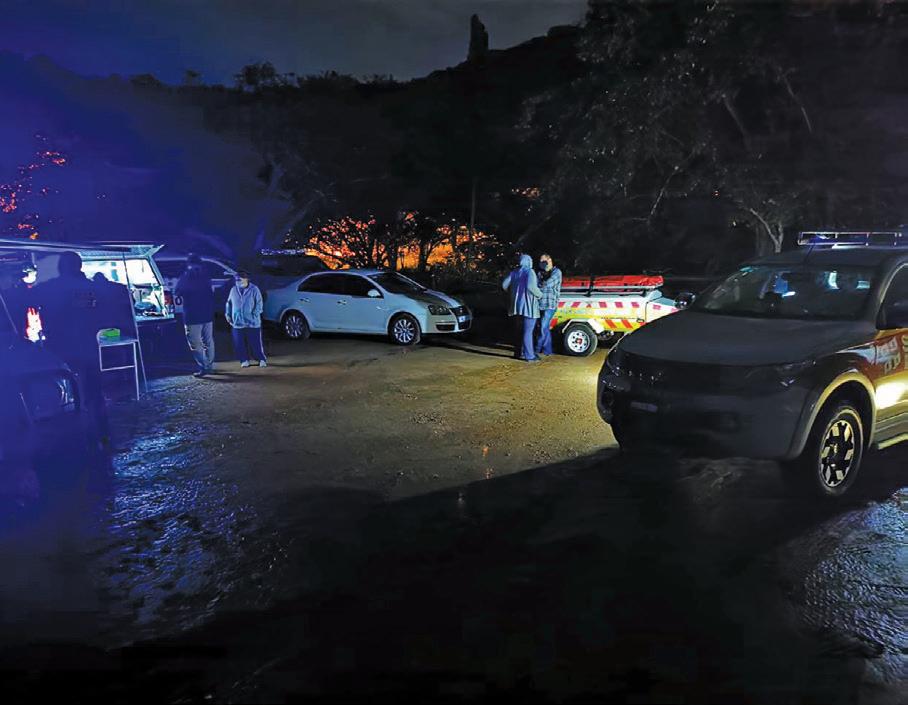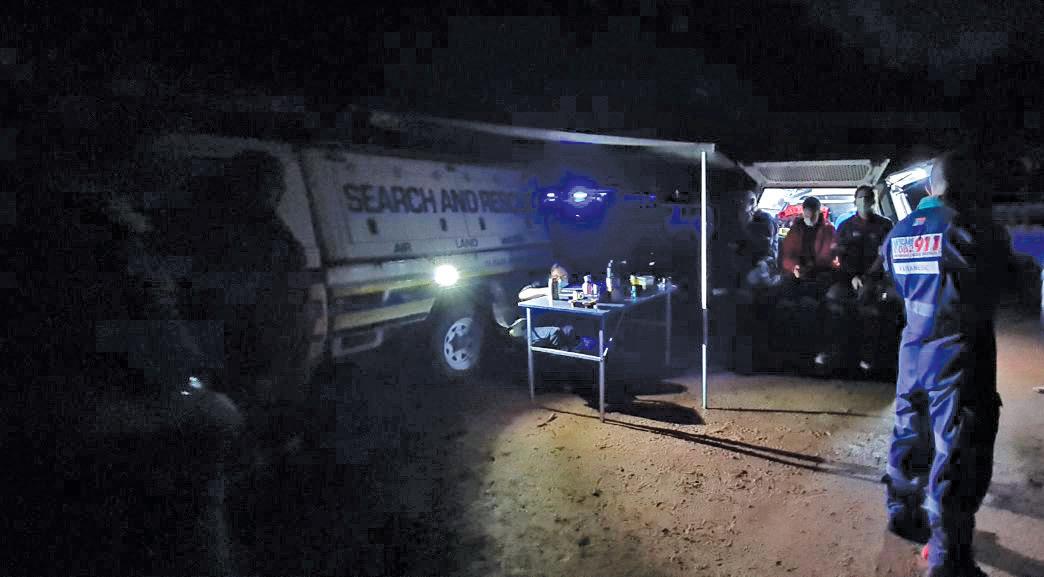
5 minute read
A GROUP EFFORT TO SAVE A FAMILY
When a family of five lost their way in the Krantzkloof Reserve after heavy flooding, a host of rescue organisations rallied together to find them. What followed was a harrowing search-and-rescue effort that extended deep into the night. By Cherelle Leong
LOCATED ABOUT 30KM INLAND from Durban Harbour, the Krantzkloof Nature Reserve is not the usual area of operations for Station 5 (Durban). But when a call came in that a family of five, including a two-year-old girl, were missing in the reserve, which was flooded after a heavy thunderstorm, there were concerns that a swift-water rescue team may be needed. The family had headed out for a short walk late morning when the skies had been clear and the day had been warm. But a sudden thunderstorm soon changed everything, resulting in a heavy downpour of almost 60mm in only 90 minutes. It is believed the family became disorientated during the storm, and by late afternoon the mother, who had stayed at home, raised the alarm.
A joint operations centre was set up between the South African Police Service (SAPS) K9 Unit, Kloof Neighbourhood Watch and RescueTech, the local volunteer rescue organisation. An initial search of the trails downriver showed no evidence of the missing family, and when it became clear that the rivers were in flood, Station 5 (Durban) was activated for a potential swift-water rescue operation.
It was after 8pm by the time the search teams were assembled, comprising of Sea Rescue crew, RescueTech volunteers, Metro paramedics and SAPS K9 operators. Two teams headed down into the gorge while a third support team operated from the lookouts above the rocky crags. The heavy rain had transformed the trail into a very slippery route, and the darkness, dense vegetation and intermittent rain compounded the difficulty of the search. Shouting and waiting for a response and shining torches were all the rescuers could do to try to locate the family.

VERBAL CONTACT
It was the search teams operating from above the kloof that first heard shouts in response to their calls. But the echo of the terrain made it difficult to pinpoint where the family might be. A short while later a PIN of a possible location came through. This indicated that they were upriver and halfway up the steep gorge. At that stage Durban’s station commander Jonathan Kellerman’s team was at a river crossing closest to the location. The team decided to split again, with half waiting at the crossing for the other rescue crews, while the other half headed out on the most direct route to find the lost family.
Shouting intermittently as they made their way, they eventually made verbal contact with the family around 10pm, confirming that they were heading in the right direction. As they arrived at a small clearing halfway up the kloof, torchlight revealed the very fatigued, cold, wet and dehydrated group. After a quick medical assessment, the children were deemed safe. The father, however, was weak and appeared to need medical attention. The crew shared their water and a chocolate bar with the family to help them regain some strength. And they would need it: the terrain and weather conditions wouldn’t allow for a helicopter extraction, so the team would need to walk the family out in the darkness.
Marita Minne, a Station 5 crew member, comforted the two-year-old, wrapping her in a space blanket. The little girl clung to her and Marita (a mother herself) made a promise that she would return the child to her mother’s arms.
Andrea Passoni, another crew member, assisted the father, while Jonathan and the RescueTech volunteers, Gareth Morgan and Brandon Carr, along with SAPS K9 member Sergeant C Chetty and his dog, Ghost, guided the three teenagers.
SINGULAR FOCUS
There was no trail – they’d cut a direct route through the dense forest and would now have to slip and slide and crawl back down. Initially the toddler made a valiant effort, wrapping her arm around Marita’s neck, which left Marita with only one arm free to use as they slid downhill. But eventually exhaustion took its toll and Marita had to hold the little girl with both arms and rely on her team members to get them down safely. She’d taken her lifejacket off in order to hold the child closer and warm her with her own body heat. One crew member pulled Marita’s feet from below, while another steadied her at her shoulders. She was focused on one thing alone – keeping the child calm and safe.
When they eventually reached the flooded river, it took coordinated teamwork to get everyone across safely. Waiting for them on the other side was a relieved crew and a team of medics – but when Marita tried to hand over the toddler to them, the child screamed and refused to let go. Despite the fatigue of having carried her for two hours, Marita had no choice but to continue doing so. The going was slow, up the steep muddy incline, with the tired crew needing to rest almost every five minutes. Despite all this, there was singing and tickling and telling stories – anything to keep the little one from feeling the stress of the situation. It was almost 4am when they crested the top of the trail, where the joint operations centre had been set up. Marita finally got to fulfil her promise by safely placing the child into the arms of her incredibly relieved mother.

SUPPORT: THE WORLD OF DIFFERENCE
The success of this rescue was due to an immense team effort of community services and volunteers. From the RescueTech volunteers who located the casualties by shouting from the top of the gorge to the Sea Rescue crew who raided their cupboards to bring coffee and refreshments to the joint operations centre while the operation was underway. For the team directly involved with the casualties, it made the world of difference to know they had radio support and could count on the backup of Metro paramedics, SAPS search-and-rescue specialists as well as a relief Sea Rescue crew ready to take over. This was no ordinary rescue but a family effort to save a family.











